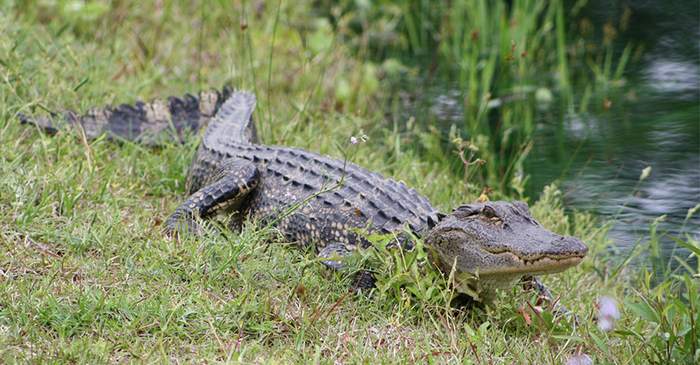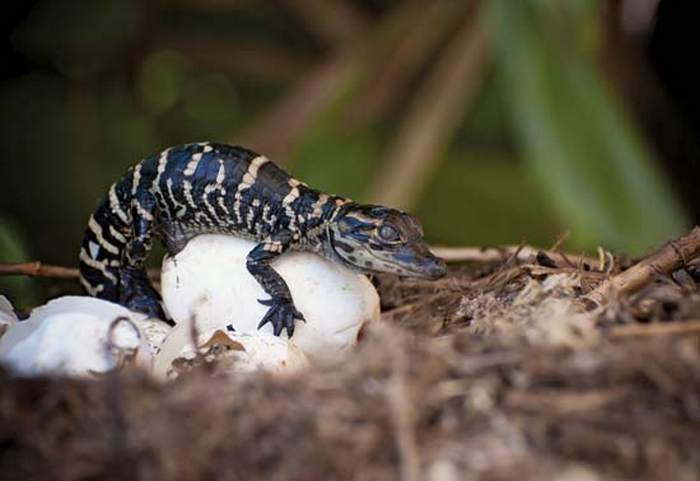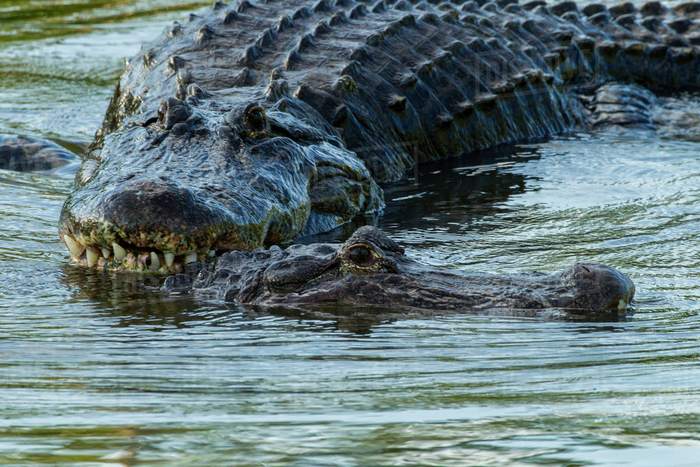The American Alligator is the only species from the family Alligatoridae that is native to the United States. Alligators are not an endangered species in the United States. In fact, alligators were removed from the endangered species list in 1978. They are, however, managed in all states where they occur.
Alligator Hunting?
How does the hunting of alligators protect the species? As a sustainable economic resource, alligators are important to regional economies. That value serves as an incentive for state and federal agencies as well as private landowners to protect and manage alligator habitat. Responsible recreational and commercial alligator harvest is a critical component of effective habitat management, which guarantees the future of the alligator and the many other species of animals and plants that share its wetland habitat.

The American alligator (Alligator mississippiensis), a reptile, is a member of the Family Alligatoridae. Alligator populations reached their lowest levels across the U.S. the early 1960’s due to several factors. However, management and conservation actions by state and federal governments that were required by the Endangered Species Act (ESA) allowed the alligator population to increase.
Alligator Populations
Alligators were removed from total protection status under the ESA in 1987. The alligator is now officially listed as “threatened by similarity of appearance” because of its likeness to other protected crocodilians worldwide. This provides greater flexibility for states where alligators are found to manage alligator populations.
Alligators are quite widespread within the southeastern United States. They are found from the southern tip of Texas to the northeastern part of North Carolina. Alligators are primarily limited by temperature, not habitat. Alligators can survive in a variety of habitat types and even do well in river systems. Though these wetland types to extend over much of the eastern U.S., cold weather keeps alligator populations limited southward. However, a small number of individual alligators do naturally occur in areas thought not be suitable habitat.
Life History of Alligators
When alligators hatch, they are about 8 inches in length. They will grow about 10 inches each year, but that is dependent upon environmental conditions. Only about 20 percent of the young gators will actually survive to maturity. Predators such as raccoons, birds, snakes, otters and other alligators get the majority of the hatchlings.

In general, alligators usually stay near the location where they were hatched for at least two to three years before moving out and establishing their own range. Females generally have smaller home ranges than males.
Alligators can live up to 60 years in captivity, but in the wild they rarely live more than 50 years. Male alligators can grow up to 16 feet in length and weight up to 800 pounds, although 13-footers are rare. Female alligators can grow up to 10 feet and both males and females are capable of reproduction at about 6 to 7 feet in length. After breeding, females lay an average of 35 to 40 eggs that incubate for about 65 days.

Alligators are carnivores and will eat almost anything they can catch, even one another. While alligators are small, ther diet consists mainly of small prey such as snails, crayfish, frogs, insects and other invertebrates. They will also eat snakes and rodents caught swimming across the water.
Depending on their size, larger alligators may eat fish, turtles, snakes, waterbirds, raccoons, beavers, otters and even feral hogs. Alligators also feed on carrion and, given the opportunity, they may also eat pets and smaller domestic animals, such as dogs, cats, goats and pigs. It is important to not feed alligators so that they do not associated humans with food.
